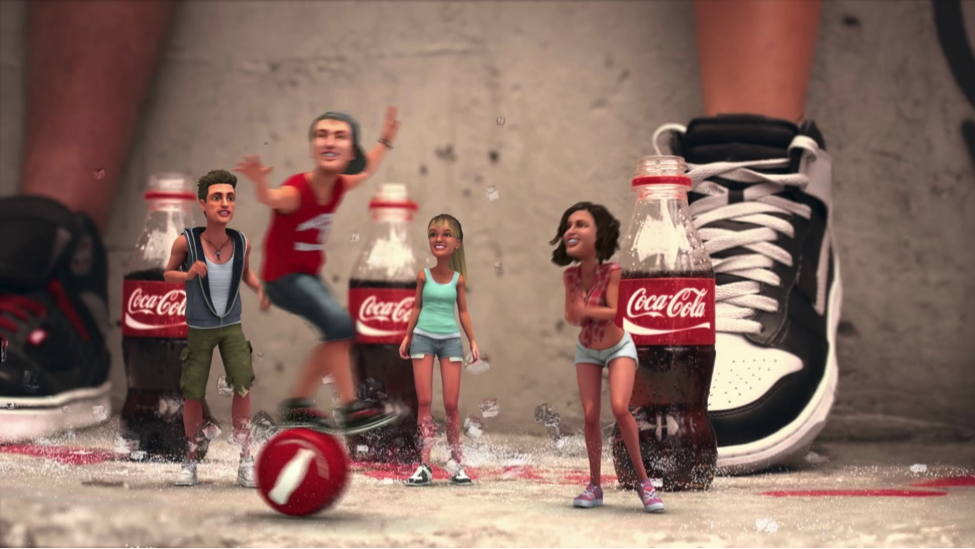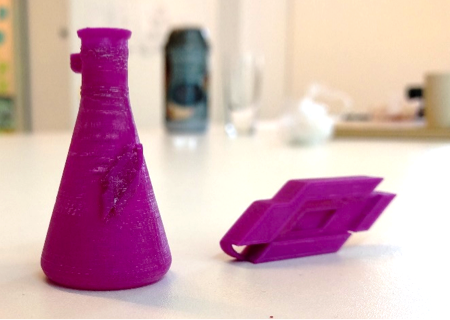3D printing is the process in which a 3D object is created from a digital file. This is also known as an additive process. In this process, an object is manufactured by laying down successive layers of material until an object is created. Since 3D printing started booming in 2012, it became clear that it would not be long before the technology would hit consumer level. 3D printing has actually been around since the early 1980’s, but it remained a niche market until a key-patent expired in 2009 allowing startups to appear.
On the rise, in marketing?
According to Gartner, consumer 3D printing will hit the plateau of productivity in five to ten years, while enterprise 3D printing will hit the plateau in already two to five years. Meaning, that by the time these technologies hit the plateau, about 30% of the potential market has adopted the technology.

Figure1: Gartner’s 2015 Hype Cycle
Businesses are never far behind on innovations such as 3D printing. A number of brands have already been experimenting with this technology. In the past few years brands like Coca Cola, Warner Bros. and LEGO have been taking on 3D printing as a method to gain advantage over their competitors. In 2013, Coca-Cola launched a campaign where people could create their own mini-me on their smartphones and print them at the Coca-Cola factory. This was launched alongside their fun marketing campaign.

Figure 2: Coca-Cola Mini-me
By the end of 2013, Warner Bros. used 3D printing in the marketing campaign for The Hobbit: Desolation of Smaug. Anyone interested could download the digital blueprint of the Key to Erebor so they could print the key. Especially for the hardcore fans, it added great appeal.
Even though a number of big brands have been using 3D printing in their campaigns, it has yet to take off in its full form. This means that there is still a lot of room for experimentation and pioneers to use it in their advantage, or that it is just a gimmick that will phase out quickly. Since consumer 3D printing is just around the corner, new possibilities appear. Companies could, for example, offer unique downloadable goods and props for consumers to print.
Printing money
Even though fiddling around with 3D printers, creating designs and making objects is cool and all, at heart, I’m still a hardcore business-guy. When I first touched a 3D printer my mind started racing. The possibilities are endless; I can make whatever I want, when I want to. This would enable pioneers and entrepreneurs to set themselves free from constraints that traditional manufacturing has.
I always find myself a bit in the through of disillusionment. There are so many possibilities. 3D printing breaks down barriers. But still, I found myself wondering, struggling and overwhelmed about turning this technology in a valuable business. 3D printing has many pros and cons. Is it a real valuable business asset? Or is 3D printing just an overly hyped gimmick?
I will try to save you the emotional roller-coaster I encountered on my path to finding business in 3D printing. I funneled the ideas, ups and downs to a point where I had a certain understanding of the possibilities the technology offers.
Offer your 3D printer as a service – This concept is as simple as purchasing something and trying to make a profit by renting it out. The real downside to this concept is the initial investment it requires. Purchasing a 3D printer can cost you anywhere ranging from hundreds to thousands of euros. This is also not the right choice if you are looking to make a quick buck. The time before you get a Return on Investment can be long. Companies such as Shapeways have used this model to generate over 1.7 million revenue over 2014.
Sell your designs – in contrary to the previous model, this is a way to quickly generate revenue. After creating a design in for example TinkerCAD, you can sell your model on a platform.
Sell customized goods – 3D printing has so far been used the most to create goods such as toys. With a little creativity you can create your own, customized product which you can sell. Here’s some untapped ideas: why don’t you make a 3D model of a pregnant woman’s echo and print it for the couple? Why can’t people design and print their own earbuds yet? Why can’t people design their own jewelry that they receive the next day? These are all things that 3D printing makes possible.
Spare costs on R&D – Whenever you are developing a new product, there will come a point where you prototype your concept. 3D printing enables you to rapidly iterate the prototyping phase. You can have a constant hands-on experience with you own product, tweak it and print it again. 3D printing can broaden your horizon, make you think faster and make you innovate better. For example, the aerospace industry uses 3D printing to test new models in a wind tunnel. The architecture industry uses it to make pretty and durable models and the automotive industry uses it to prototype parts quickly.
Make your life fun! – You can have fun while you save money! The number of useful, money saving object is enormous. For example, I’ve printed my own smartphone cover, a business card holder, microphone stand and custom-designed company keychains we can use for marketing and fun.
Creating is fun, giving is even more fun!
LABS KIDS was a recently organized event at Greenhouse Group’s location in which kids were taken on a journey in the digital world of tech and innovation. 3D printing was used to teach the kids about the future of technology (and just have fun).
For the event, we decided it would be nice if we could give the kids something cool to take with them. So the 3D printer, once again, showed some good use. The 3D print sweatshop opened and we printed around 50 Erlenmeyer keychains.

Printing tips
Printing tips are not sacred, you should always be experimenting and looking for ways to improve the quality of your prints. The following tips have helped me greatly and gave me the best results.
Print settings for:
PLA – print nozzle temperature: 210°C, heated bed: 70°C (not necessary), print with fans on 100%
ABS – print nozzle temperature: 250°C, heated bed: 110°C, fans off, do not print fast
Printing high quality
PLA – If you want to achieve a high quality print with PLA, the basic guideline suggest printing a 60 micron surface at 50 mm/s with a 15% infill with the fans and retraction enabled.
ABS – If you wish to achieve a high quality print with ABS, the basic guideline suggest printing at 40 mm/s with a 20% infill.
General tips
A big issue many printers face is warping. Warping is especially bad when printing something with ABS filament. Warping means that the object sets itself free from the print bed and it bends (warps). Warping happens when the object cools down too rapidly.
It is best countered by taking the following measures:
- Use a heated bed (build platform), set it at 70°C for PLA and 110°C for ABS
- Print with a raft – a flat lattice work of printed material underneath the object
- Calibrate the build plate to make sure the first layer is perfect
- Clean the surface – before printing clean the bed, get rid of any dust and other debris
- Lower the printing speed
Another way to counter warping is by making sure the plastic sticks better to the surface. This can be done by applying another polymer to the printing bed. Many people use Pritt or hairspray, but this makes cleaning the plate difficult. In my experience, using blue 3M masking tape seems to work just about perfect. If the object still warps, a way of raising the temperature around the printing bed is to seal the printer’s front side with cling film. This helps to isolate the platform and keep the warmth inside.
Purchase a digital caliper. These are infinitely useful for 3D printing. You can use them to measure filament, calibrate the printer and adjust your utility-oriented prints so you know it will fit perfectly. It will also be very useful when designing your own models.
Lastly, do not treat your slicer software as a fast drive-through where you quickly pass through on your way to the printer. If the print settings in the slicing software are not correct, the print will not end well, no matter how good the printer is calibrated. Good printing settings can make life a lot easier.







Leave a Reply
You must be logged in to post a comment.